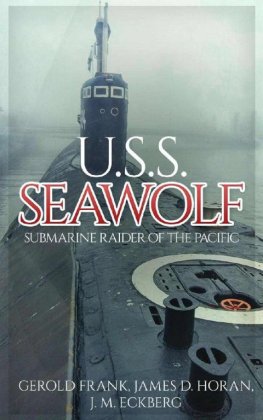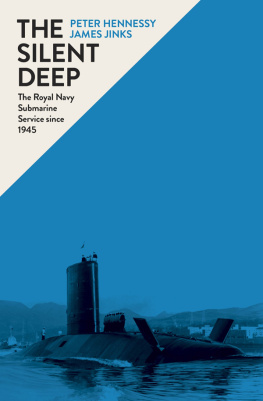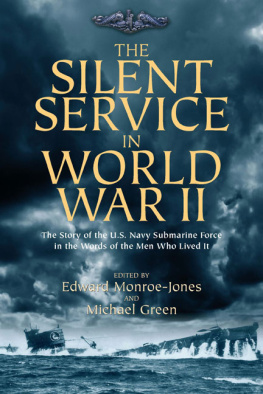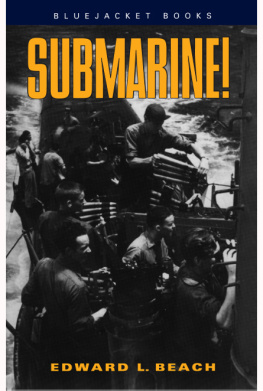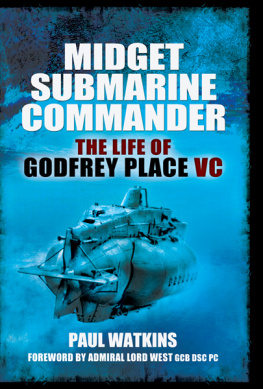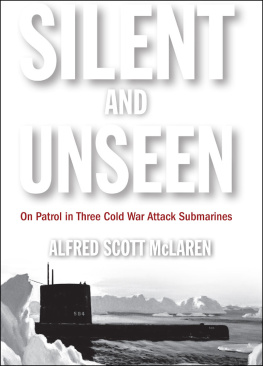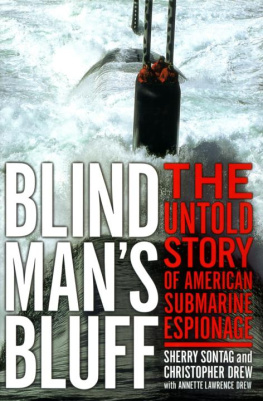beneath the waves
EDWARD F. FINCH
beneath the waves
The Life and Navy of
CAPT. EDWARD L. BEACH JR.
Naval Institute Press | Annapolis, Maryland
The latest edition of this work has been brought to publication with the generous assistance of Marguerite and Gerry Lenfest.
Naval Institute Press
291 Wood Road
Annapolis, MD 21402
2010 by Edward F. Finch
All rights reserved. No part of this book may be reproduced or utilized in any form or by any means, electronic or mechanical, including photocopying and recording, or by any information storage and retrieval system, without permission in writing from the publisher.
ISBN 978-1-61251-453-6 (eBook)
The Library of Congress has cataloged the hardcover edition as follows:
Finch, Edward F.
Beneath the waves : the life and navy of Captain Edward L. Beach Jr. / Edward F. Finch.
p. cm.
Includes bibliographical references and index.
1. Beach, Edward L. (Edward Latimer), 1918-2002. 2. United States. NavyOfficersBiography. 3. United States. NavySubmarine forcesBiography. I. Title.
V63.B43F56 2010
359.0092dc22
[B]
2010009802

 Print editions meet the requirements of ANSI/NISO z39.48-1992 (Permanence of Paper).
Print editions meet the requirements of ANSI/NISO z39.48-1992 (Permanence of Paper).
14 13 12 11 10 9 8 7 6 5 4 3 2 1
First printing
All photographs are from the collection of Mrs. Ingrid Beach.
To the women and men who, whether as professionals or reservists, for generations have gone down to the sea in ships in the protection of our Republic, in sincere gratitude and respect this book is dedicated.
Contents
7MC | submarine control announcing system |
ASC | American Society of Cinematographers (member of) |
CNO | Chief of Naval Operations |
CO | Commanding Officer |
COB | Chief of the Boat |
COMSUBLANT | Commander, Submarine Force, U.S. Atlantic Fleet |
COMSUBPAC | Commander, Submarine Force, U.S. Pacific Fleet |
CRdM | Chief Radarman |
EN2 | Engineman 2nd Class |
EN3 | Engineman 3rd Class |
GM2 | Gunners Mate 2nd Class |
JANAC | Joint Army-Navy Assessment Committee |
LLD | Doctor of Laws |
MC | Medical Corps |
NATO | North Atlantic Treaty Organization |
OPSO | Operations Officer |
PA | public address |
PCO | Prospective Commanding Officer |
PN3 | Personnelman 3rd Class |
PXO | Prospective Executive Officer |
QMC | Chief Quartermaster |
QM1C | Quartermaster 1st Class |
SecNav | Secretary of the Navy |
SH2 | Ships Serviceman 2nd Class |
SINS | Ships Inertial Navigation System |
SN | Seaman |
SO1 | Sonarman 1st Class |
SRPC | Senate Republican Policy Committee |
SubRon | submarine squadron |
WAVES | Women Accepted for Volunteer Emergency Service |
XO | Executive Officer |
YMS | Yard Mine Sweeper |
YNC | Yeoman Chief |
T here have been family and friends who surmised that my interest in the history of the U.S. Navy, especially its role during World War II, is an outgrowth of my father having served in that branch of the American armed forces during the greatest conflict in the history of the world. Perhaps on some preconscious level there may be a connection, but my fathers reluctance to ever talk about his experiences on board a YMS-class minesweeper in the Pacific provided little fodder for what has grown into a lifelong avocation. The roots of my interest actually began on a rainy day in 1959 when my numerous complaints about being bored were answered when my Grandfather Finch tossed me a book and suggested that I might like reading it. It was a novel, and with nothing else to occupy my time I opened it and began to read.
As a twelve-year-old mediocre reader, I had little interest in fiction and even less in history. Before I was aware of what had happened, though, I was completely absorbed in Run Silent, Run Deep, Edward L. Beach Jr.s realistic tale of life on board a U.S. Navy wartime submarine. Later, I was to realize that through Run Silent, Run Deep I took my first steps into a lifetime of reading, as well as an abiding interest in the U.S. Navys role in World War II.
Beachs vivid descriptionsof the heart-pounding tension to which a crew was subjected as their submarine was hammered by enemy depth charges, and the racing action of a night surface attackwere the carrots that drew me into the novel, but it was his portrayal of men who held to a code of honor and duty even in the midst of war that grabbed my long-term interest.
Over thirty years later, Robert Neuleib and I submitted a proposal for a scholarly paper for presentation at the Naval History Symposium, then held biannually at the U.S. Naval Academy. Bob was a fellow high school debate coach at the time, and we soon discovered a mutual interest in naval history. Our proposal was later accepted and we went to Annapolis to present the paper we had written, on the influence of the Roberts Commission Report on the general publics perception of who was to blame for the lack of American preparedness for the Pearl Harbor attack.
To our mutual surprise, the commentator on our panel was Edward L. Beach Jr.! Not only did I have the unexpected chance to meet the man who had introduced me to naval history and reading, but I shared the same stage with him. Feeling like a bibliophile given a lifetime gift card to Barnes & Noble, the rest of the conference became largely a blur for me after the session with Captain Beach.
That 1991 meeting was only the first of several personal encounters with Captain Beach. Our relationship, however, never grew beyond the casual as we would meet periodically at naval history gatherings. When I began working on a doctorate in history at Illinois State University, I decided to focus part of my dissertation on Beach and his father, also Capt. Edward L. Beach, USN. That doctoral work led to several telephone interviews, and then a chance to meet and have lunch with Captain Beach, his gracious wife Ingrid, and their elder son, Edward A. Beach. The lunch was followed by a long afternoon interview and then driving the captain through parts of southern Wisconsin so he could meet up with his family again.
Next page

